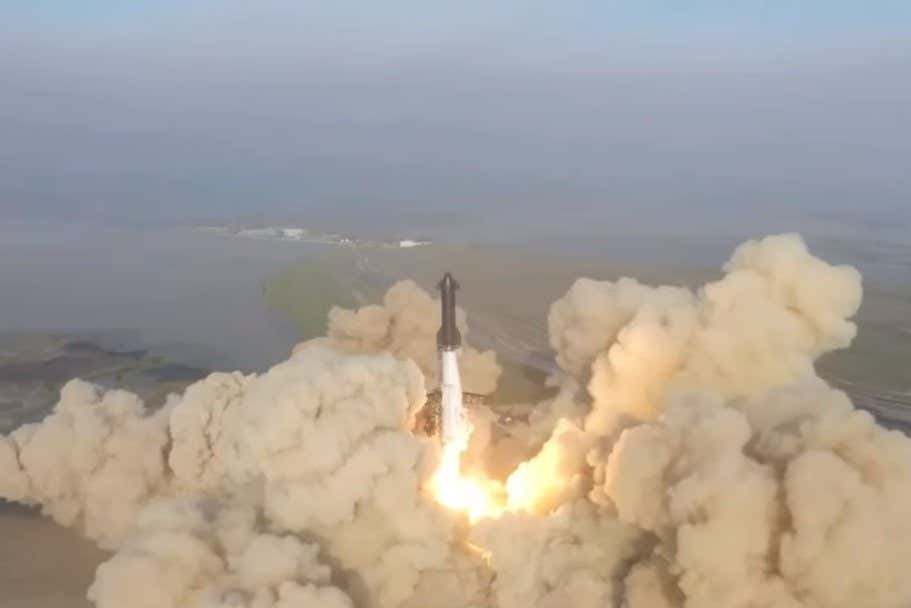Starship has finally launched, but it didn’t go quite as planned. The SpaceX rocket, the biggest and most powerful to ever fly, lifted off from the Starbase launch facility in Texas on 20 April in its first full test. Shortly after liftoff, it exploded.
It has been a long road for Starship – testing of smaller prototypes since 2019 saw a few successful “hops” of up to 10 kilometres in altitude, but also four malfunctions, three of which resulted in the destruction of the prototypes.
Those tests were all prototypes of the eponymous top part of Starship, the piece of the craft that is planned to eventually house astronauts. The bottom part, called the Super Heavy booster, houses the 33 Raptor engines that propelled Starship off the launchpad.
Advertisement
But less than 5 minutes after liftoff, something went wrong. At that point, Starship and Super Heavy were intended to separate, with Super Heavy splashing back down in the Gulf of Mexico and Starship continuing onward for a 90-minute flight. They did not separate, and the whole spacecraft began to tumble. Then, it exploded.
Read more:
Why has Virgin Orbit shut down and what will happen to UK spaceports?
